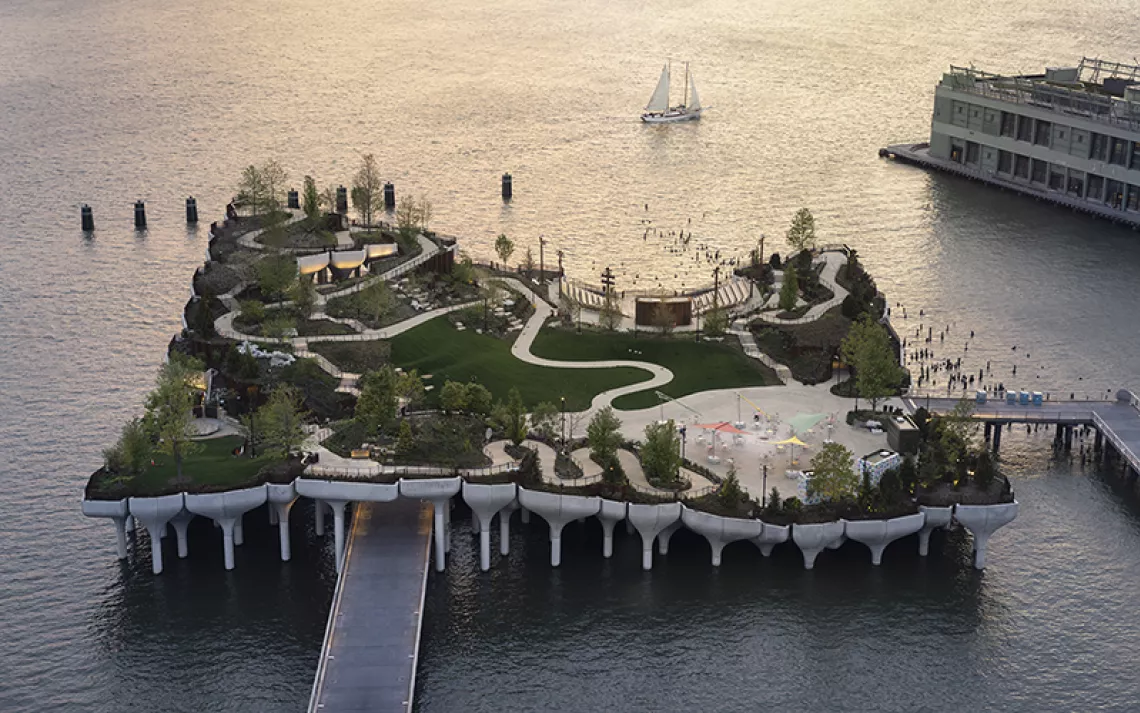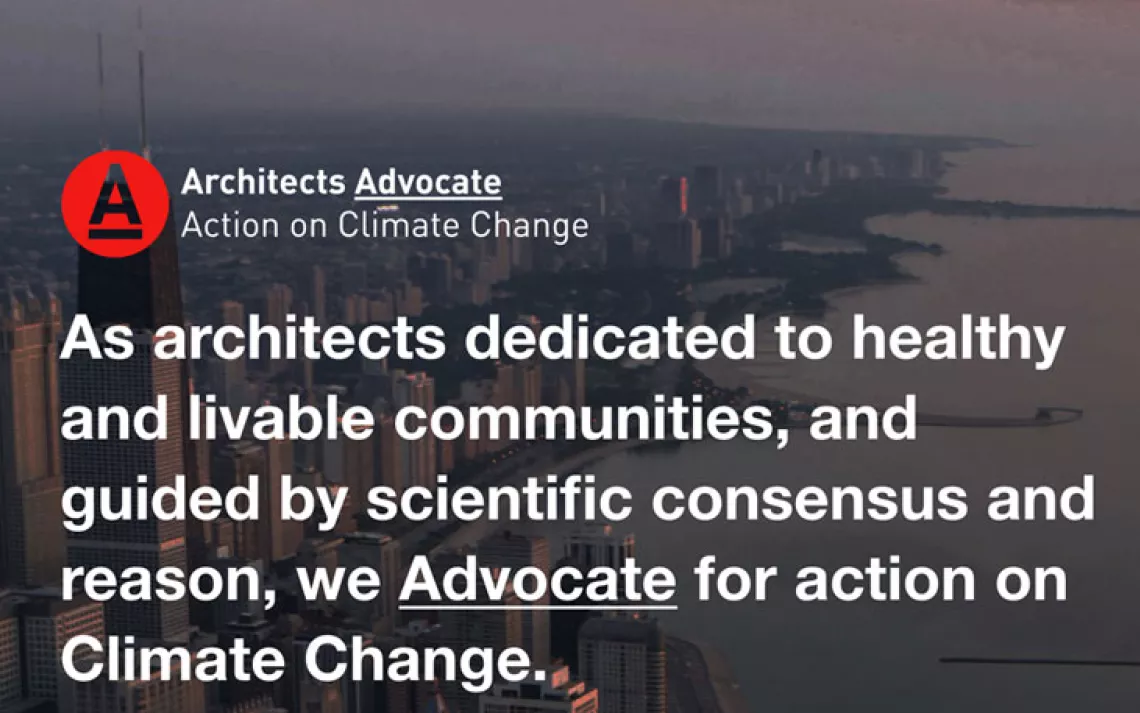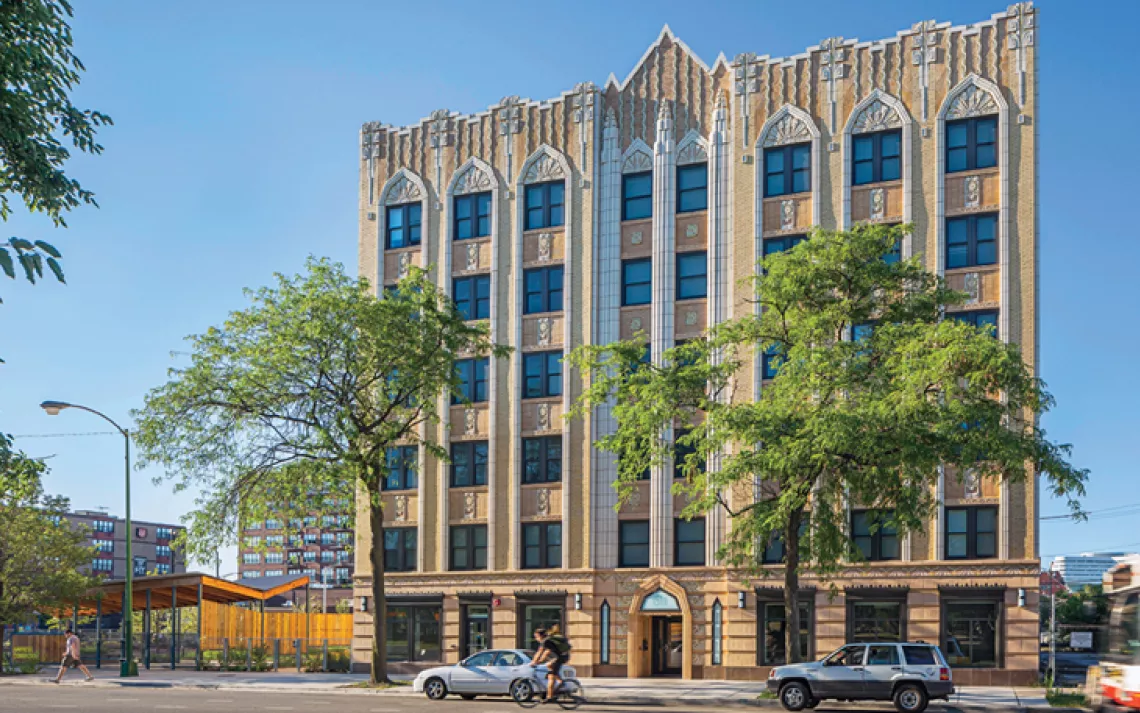So You Want to Be an Architect?
First, go to a planning commission meeting

Photo by Megaflopp | iStock
When I was in college, I remember talking with another student who scoffed at the idea that architects have any effect on the world—the real power, they said, lay with developers. In the years since, though, I’ve seen architects get a lot done, both good and bad. So many factors (how a building is designed, who it is built for, what it is made of, how much energy it uses, how many parking spaces it has) go on to affect the people who live and work there, and the surrounding community—for decades.
This is part of a series of interviews about what jobs involving the environment are actually like—as opposed to what people think they are like. In earlier installments, I interviewed an environmental lawyer and a wildlife biologist. This time around, I’m interviewing Mark Hogan, a founder of OpenScope Studio and an architect who has worked on many different projects (including a visitor center in a forest that is also a cemetery) but has gone on to specialize in urban infill construction—that is, the kind built within cities, as opposed to on the margins, where a lot of new development happens—and accessory dwelling units (small apartments that are added to pre-existing buildings, most commonly known as ADUs).
We talked about youthful idealism, climate change, and what it’s like to help rewrite city planning code.
So I’m wondering—did your concern about the environment come before or after you were interested in architecture?
I had originally planned to go to architecture when I was in high school, and I was accepted to an architecture program. But then I changed my mind and decided to go into fine art.
I couldn't see past the idea that building more stuff was the problem, basically. I felt like architecture was by default going to be a negative thing for the world, or for the environment, more specifically. And then a couple years later I was living in Buffalo and became very interested in urban density and reversing sprawl—things that are more common in discussion now than they were 20 years ago.
And I realized that architecture was actually a major part of the solution. Architecture and planning didn't have to be the problem, unless you made them the problem. You can decide what type of projects you want to work on. Maybe not when you're fresh out of school and you just need to be able to pay your rent. But ultimately, in the course of your career, you can decide that you don’t have to be a part of building more detached houses in the Central Valley or strip malls with 10,000 parking spaces.
For example, there's a fairly high-profile movement of architects who have chosen not to work on any kind of prison projects. There is a consciousness within the profession about thinking about what type of projects you're working on and whether they agree with your values.
So it sounds like you knew that climate change was happening early on. When did you figure that out?
We had to write one research paper in high school English class, and it had to be a topic that was controversial. I wrote about climate change, though this was in the '90s, and global warming probably is what we were calling it. I remember reading all the research and thinking, “There doesn't really seem to be any actual debate to this.” It was a controversial topic in the sense that, like, people don't want to believe it, but it didn’t really seem like any of the scientists were disagreeing about any of this stuff. I was horrified, but there wasn't a very big discussion at the time. When Al Gore's movie came out, that was the first time that I really started hearing about it a lot in the US.
When you went to architecture school, how much did you learn about environmental or sustainable architecture in school versus what you were forced to learn on your own later?
I went to Berkeley, so there was definitely more of a focus on sustainability than you would get elsewhere. It was a core part of the curriculum—one of the required classes we had to take was all facets of sustainable design, like installation and designing for solar and passive design strategies and things that a lot of schools don't talk about much.
What is some good advice that you've gotten in the past about your career?
Be intentional about where you work. But also understand when you get out of school that the first job you take probably doesn't really matter that much in the long term, because you're probably going to change jobs quite a few times in the first couple years of your career. It's pretty healthy to do that and figure out what you like and what type of environment you like working in—whether you like working in a bigger firm or a small firm and what type of work you're interested in. I think it's a good experience to try out a bunch of different things to figure out what you're interested in and not obsess too much about getting that perfect job right after graduation.
There's so much pressure to work for free. It’s much worse in other countries because it's more clearly illegal now in the US. But it was common for people to take extremely minimally paid or unpaid internships to get stuff on their portfolio for their next job. That is something that's become much less common now.
Did a lot of the people you went to school with stay in architecture?
Not everyone. People who come out of undergrad architecture programs often choose to go into other fields. Berkeley has a huge undergrad architecture program, but it's not considered a professional degree like a master's. You can practice in California, but in most states you need at least a five-year degree to practice.
There is a degree called environmental design that actually prepares students for a wide variety of potential career paths. A lot of those students don't go into architecture, and the ones that do often end up going on to grad school for a two-year program. Once people get to grad school, most of them at least go on to practice for a couple years and then maybe find something else that’s design related.
Is there anything you wish you'd known before you went into school for architecture?
I think I learned a lot more once I was in school about how very different programs are. You sort of know the reputations of people who are teaching, but you don't know as much about the day-to-day life and how you're selecting classes and some of those other things may be really different. Because I went to one school and then transferred, I got a firsthand look at how different that process can be depending on the politics of the department and just the whole philosophy around electives and charting your own path versus being handed a schedule.
Based on the experience of friends who've been in architecture programs, it almost seems like it's art school sometimes. But then those same people, once they have jobs, a lot of the actual work seems to be “how far is your sink from the wall.”
Right before I talked to you, I was having a conversation about sewer laterals. A lot of the day-to-day is figuring out either mundane things or complicated technical things where you're trying to coordinate a lot of other people.
One of the things you don't realize that much about architecture, even while you're in school, is how much of your job is actually coordinating other people's work versus doing your own work. It's such a collaborative field, and you're relying on a lot of consultants and specialists. Your job is often to integrate everything they're doing into a cohesive end product and then communicate that to the client and communicate that to the official who's reviewing the plans, etc. A major part of your work is getting everybody else to work together and interpreting what they're all doing.
It's the opposite of The Fountainhead.
Yeah, it's the direct opposite of The Fountainhead. The lone genius idea is just so stupid and not at all tethered to the way that anyone actually works. The only people who are doing something like that are maybe a two-person firm that's designing fancy private houses. But even then they're hiring a structural engineer and a bunch of other consultants to help them.
Do people who are structural engineers go to architecture school too?
They would go to an engineering program, and then they would have to choose engineering for buildings. That would be more practically focused. And they might be happier because they’d be probably doing more real projects in school.
How did you get involved in reworking San Francisco’s standards for ADUs?
That was a research project and a guidebook for the planning department—it wasn't any kind of binding, legal framework. When we started working on the handbook not even 10 years ago, ADUs could only be built within a very small radius of the Castro Muni station as part of a trial program.
We started to get invited in by a couple of the supervisors to have meetings about what we thought would work and what wouldn't work. So it was a great experience, where we were able to take a nonbinding research project and then have it be turned into almost an advisory role on ADU policy. And then eventually a lot of what was within those San Francisco ADU laws got picked up by state laws that went into effect last year.
How much did the politicians you were dealing with know about what it takes to actually build a building?
I think it was strategic on the part of the planning department to have the handbook produced because it was easy to understand for people who weren't familiar with construction.
The handbook was almost more of a tool to help ease the path for the legislation than to show homeowners how to add an ADU, because you're right—a lot of politicians don't have any substantial experience with design or construction. Sometimes their aides came out of the background working for the planning department and could provide more context, but the handbook made it much easier, like, “Hey, if this is legal in your district, like this is what it's gonna look like, page 20.”
In terms of the jobs that are available to people after they graduate from architecture programs, who tends to be hiring the most?
Right now there are a lot of jobs, and people have more choice as far as what type of jobs they're taking. In a weaker economy, you might end up having to take a job, you know, doing tenant rollouts for Old Navy or something, even though you're not interested in that, because you really just need to put in some hours somewhere where they're going to pay.
What’s a tenant rollout?
There's a whole industry in architecture of firms that basically are just producing construction drawings for chain stores, figuring out how you're going to put like a new Old Navy into a mall somewhere. They are just doing these one after another. Even the Apple stores have fairly prominent architects designing big experiences, but then there's somebody else who's actually figuring out how to put all of those in malls all over the world.
Why do you think there's so many people hiring right now?
There's been a huge housing boom in a lot of parts of the country. So many people are rushing to build more housing now.
It's way too early to kind of make any predictions about where and how people are going to be working or living in another five years from now, given how much things have changed in just a year. But a lot of people have moved around the country. Housing prices in places like Montana went up dramatically, just in the course of the year. Interest rates are super low. So there's like a lot of incentives to start projects right now.
We are still in a housing crisis, though. What's some of the best policy that could happen for getting new housing?
The best things that can happen are changes at higher levels of government. The state ADU law that went into effect last year was great because it took away local control that a lot of cities were just using to prevent anything new from being built. There are arguments to be made for local control, but when it comes to allowing for things like bike lanes and affordable housing, there are a lot of cities that don't want to allow any.
Leveling the playing field statewide and saying you can't just arbitrarily say "you can't build affordable housing" is important. It helps local politicians and planning departments, because in many cases the staff recognizes the need for more housing or safer bike infrastructure, but there's community opposition saying, “Don't take out any parking.” But if the state says they have to do it, then it's out of their hands.
It hasn't been signed by the governor yet, but in California, there's legislation to officially eliminate single-family zoning and allow for two units per lot that can be sold separately. A separate piece of that allows for dividing parcels in half so that you can actually do four units on an existing lot. That’s not huge, but it's something.
But many of these things have to happen faster. People are hoping the infrastructure bill will help get more transit built, but the timelines for everything are multidecade. I am personally feeling like we don't have that much time anymore.
Figuring out how to build dense places is the most important way we can realistically address climate change. So many of the published solutions are crazy techno-futurist ideas about technologies that aren't even in existence yet as a way of solving for climate change, you know where you're going to build a seasteading community that has a solar power desalination plant or something.
Ah yes. There's a reason people don’t build in the sea very often, and it’s because the sea destroys everything.
It's one of those ideas like building houses out of shipping containers that never goes away. You know, it's really about holistically figuring out how we build better, more sustainable, denser places where people want to live, so that we're not using as many resources and we're not driving as much.
Is there any real-world experience that you would recommend trying before going into architecture school?
An internship is good. There's a lot of architecture firms that will hire people for a marketing or an admin job as a way of trying out the profession. A firm that I worked at briefly had a habit of hiring people for admin positions who were interested in going to architecture school, and most of those people actually did go to architecture school.
I didn't even know this existed before I was in school, but there were people I went to school with that had gone to a pre-architecture school summer program that basically taught them how to make a portfolio to get into architecture school. I had gone to art school, so I had no problem assembling a portfolio, since it’s not necessarily an architecture portfolio—just things you’ve worked on. But if somebody was coming out of an English degree and decided that they wanted to go to school, they might realistically have to do something like that in order to have a portfolio to show.
Even simple things are good, like going to a planning commission hearing, honestly. That is a great look into the nuts and bolts of what a lot of architects actually do. People talk about a proposed building and what it's going to look like and how it's going to function, and then you get to hear what other people think about it. Even if you didn't go to architecture school, it’s fascinating to get that understanding of how local government works.
 The Magazine of The Sierra Club
The Magazine of The Sierra Club



